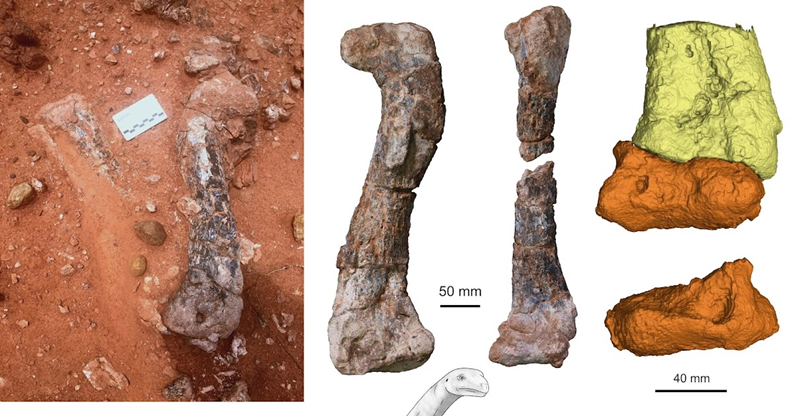- Courses
- GS Full Course 1 Year
- GS Full Course 2 Year
- GS Full Course 3 Year
- GS Full Course Till Selection
- Answer Alpha: Mains 2025 Mentorship
- MEP (Mains Enrichment Programme) Data, Facts
- Essay Target – 150+ Marks
- Online Program
- GS Recorded Course
- Polity
- Geography
- Economy
- Ancient, Medieval and Art & Culture AMAC
- Modern India, Post Independence & World History
- Environment
- Governance
- Science & Technology
- International Relations and Internal Security
- Disaster Management
- Ethics
- NCERT Current Affairs
- Indian Society and Social Issue
- NCERT- Science and Technology
- NCERT - Geography
- NCERT - Ancient History
- NCERT- World History
- NCERT Modern History
- CSAT
- 5 LAYERED ARJUNA Mentorship
- Public Administration Optional
- ABOUT US
- OUR TOPPERS
- TEST SERIES
- FREE STUDY MATERIAL
- VIDEOS
- CONTACT US
Musankwa sanyatiensis: A New Dinosaur Species
Musankwa sanyatiensis: A New Dinosaur Species
10-06-2024

Fossil remains found on the shores of Lake Kariba in Zimbabwe have revealed a completely new dinosaur species, Musankwa sanyatiensis.
About Musankwa sanyatiensis:
- Musankwa sanyatiensis is a newly identified dinosaur species based on fossils discovered along the shores of Lake Kariba in Zimbabwe.
- The genus name "Musankwa" was derived from the name of the houseboat used by scientists during their research expeditions to the site.
- The species name "sanyatiensis" refers to the Sanyati River that flows into Lake Kariba.
- Musankwa sanyatiensis represents the first dinosaur named from the Mid-Zambezi Basin of northern Zimbabwe in over 50 years.
- It is only the fourth dinosaur to be named from Zimbabwe, following Syntarsus rhodesiensis, Vulcanodon karibaensis, and Mbiresaurus raathi.
- The rocks containing the Musankwa sanyatiensis specimen date back to the Late Triassic period, approximately 210 million years ago.
- Musankwa sanyatiensis is represented by the remains of a single hind leg, including the thigh, shin, and ankle bones.
- Evolutionary analysis suggests that Musankwa sanyatiensis was a member of the Sauropodomorpha, a group of bipedal, long-necked dinosaurs prevalent during the Late Triassic.
- Interestingly, it appears to be closely related to contemporary dinosaurs found in South Africa and Argentina.
Additional key points:
- Musankwa sanyatiensis was a relatively large dinosaur for its time, weighing around 390 kg.
- It was primarily a plant-eater and likely inhabited swampy areas.
The Triassic Period:
- The Triassic Period, the first of the three geologic periods of the Mesozoic Era, began approximately 252 million years ago and ended about 201 million years ago.
- It followed the Permian extinction, the largest mass extinction in Earth's history.
- The name "Triassic" is derived from the Trias, a sequence of three rock strata in Germany found above Permian rocks and below Jurassic rocks.
- The Triassic Period marked the beginning of significant changes, including the rearrangement of continents, the evolution of life, and the geographic distribution of living organisms, that would occur throughout the Mesozoic Era.



